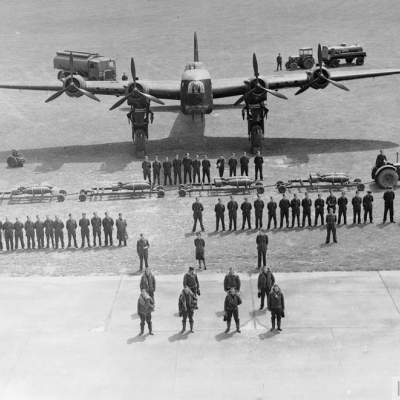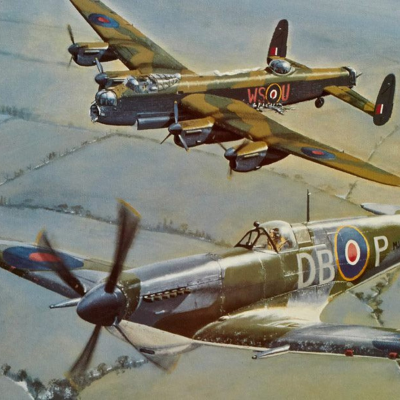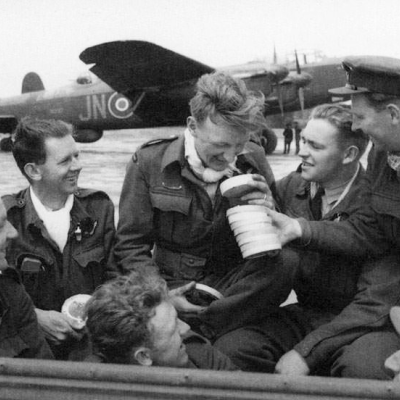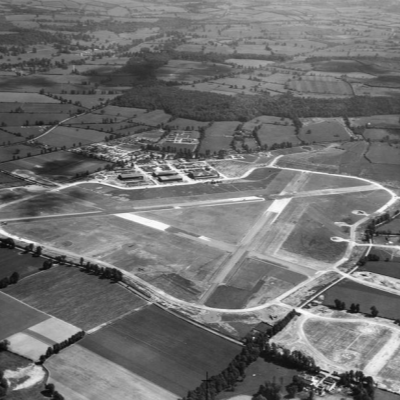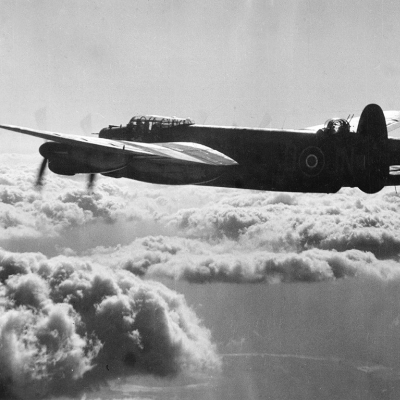Stories
Stories
75 (NZ) Squadron Memorial Garden
The Memorial Garden in the centre of Mepal Village has been a focal point for all those with association with 75 (NZ) Squadron. For those visiting the village and those that attend the annual Remembrance Day service, it is a special place to reflect and give thanks for the sacrifices made.
It took a team to keep the bombers flying
Bomber Command aircrew operated as a team, each member with a vital role to ensure they reached their target, dropped their payload and safely returned to base. But they were part of a much bigger team, a mix of both air and ground crew responsible for maintaining and servicing aircraft.
George Thompson VC and his pilot Harry Denton
In the Ellesmere RSA is a painting by Chris Sheehan, the Shepherd. John Lay tells the remarkable story of the Denton crew, their kiwi skipper fighting to get his crippled Lancaster back to safety and his Scottish wireless operator whose “courage has seldom been equaled and never surpassed".
The first heavy bomber to land in liberated France
Shortly after D-Day a 75(NZ) Squadron returning from an operation to Villers-Bocage made an unplanned stopover in Normandy, becoming the first Allied heavy bomber to land (and later take-off) in libertaed western Europe. Chris Newey tells of the remarkable experience of the Williamson crew.
Building Airfields
A massive network of airfields would be needed for Bomber Command to operate. From just 33 permanent stations in 1939, by the end of the war squadrons had operated from 170 airfields across England and Scotland. Construction of airfields, hangers, operations and accommodation these would be a major task.
Doug and his Dog
Bomber crews became quite attached to their regular “kites”, relying on them to get them home safely each night. A wartime photo, posted online by the Air Force Museum of NZ, re-united Doug Williamson with "his" Lancaster - HK601 JN-D for “Dog”, aka “Snifter”, 75 years after jumping from her over Germany.

